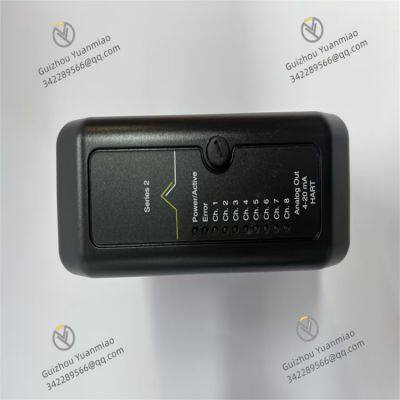Product Description
I. Overview
VE4005S2B1 is a high-performance electric actuator mainly used for precise on-off control and opening adjustment of large-diameter butterfly valves, ball valves and other valves. It uses electricity as the driving source, and through the collaborative work of core components such as internal high-performance motors and precision reduction gear sets, it efficiently converts electrical energy into mechanical energy, thereby achieving stable control of valves. It is a key equipment to ensure the safe transportation and precise adjustment of high-pressure and large-flow fluid media (such as crude oil, high-temperature steam, corrosive liquids, etc.) in industries such as petroleum, chemical industry, and metallurgy.
In large-scale industrial production processes, the transportation and adjustment of fluid media are crucial to production safety and efficiency. The VE4005S2B1 electric actuator, in conjunction with the corresponding valve, can quickly and accurately adjust the valve opening according to the instructions of the control system, and strictly control parameters such as the flow rate and pressure of the medium. For example, in the oil transportation pipeline system, the opening degree of the oil transportation valve is controlled by VE4005S2B1, which can accurately adjust the crude oil transportation volume according to downstream demand, avoiding leakage accidents caused by excessive pipeline pressure due to excessive flow, or affecting production progress due to insufficient flow, ensuring the entire transportation process is safe and efficient.

II. Technical Parameters
Drive motor: Adopts a three-phase asynchronous motor with a rated power of 2.2kW, a rated voltage of 380V AC, and a rated frequency of 50Hz. The motor features high torque output, stable operation, and strong overload resistance, which can provide strong and continuous power for the actuator, easily driving large-size valves to operate under high-load working conditions.
Output torque: The output torque is as high as 1600N?m, with strong driving force, and can be adapted to a variety of large-diameter, high-pressure level valves. Even when the valve is subjected to large medium pressure, it can stably and reliably complete opening, closing or adjustment actions to ensure the normal operation of the valve.
Action time: The action time of the valve from fully closed to fully open is ≤60 seconds, which can respond to the instructions of the control system in a timely manner, meet the speed requirements for large-flow fluid medium adjustment, and improve the dynamic control performance of the system.
Stroke range: Supports 0-90° angular stroke adjustment, suitable for the control of angular stroke valves, and can realize continuous and stable adjustment of the valve from fully closed to fully open, accurately meeting different flow control needs.
Protection level: The protection level reaches IP67, with excellent dustproof, waterproof and immersion-proof capabilities. It can operate stably for a long time in harsh industrial environments with much dust, humidity and even short-term immersion, effectively protecting internal electrical components and mechanical structures, and greatly extending the service life of the equipment.
Working environment: The working temperature range is -30°C to +70°C, which can adapt to extremely cold and high-temperature environments; the relative humidity is 5%-95% (no condensation), and it can work normally in humid environments. At the same time, the actuator can withstand vibration with a frequency of 10-50Hz, an acceleration of 15m/s2, and an impact of 30m/s2, with excellent anti-vibration and anti-impact performance, adapting to complex industrial on-site environments.
Control signal: Supports 4-20mA DC analog control signal and switching value control signal (passive contact). The analog signal can realize continuous and precise adjustment of the valve opening, and the switching value signal is used to control the full opening and closing of the valve, compatible with a variety of industrial control systems, facilitating system integration.
Feedback signal: Outputs 4-20mA DC analog feedback signal, which can accurately feed back the actual opening information of the valve to the control system in real time, forming a closed-loop control, enabling the control system to grasp the valve status in real time and further improve the control accuracy.

III. Functional Features
Efficient and precise adjustment: VE4005S2B1 adopts advanced servo control technology and high-precision position sensors, and the valve opening control accuracy can reach ±0.5%. It can accurately adjust the valve opening in strict accordance with the instructions of the control system, ensuring that the fluid medium parameters are stable within the set range, which greatly improves the stability of the production process and product quality.
Comprehensive safety protection: Equipped with a complete protection mechanism, including over-torque protection, over-current protection, over-heat protection, phase loss protection, etc. When abnormal situations such as valve jamming, motor overload, power phase loss, and excessive temperature occur during the operation of the actuator, it will immediately automatically cut off the power supply and stop the action to prevent damage to the actuator and the valve. At the same time, it will send a clear alarm signal to remind operators to handle it in time, maximizing the protection of equipment and production safety.
Multiple operation modes: In addition to the conventional electric control, it also has a manual operation function. In emergency situations such as power failure and electrical failure, the valve can be quickly operated through the manual operation mechanism, ensuring that the valve status can still be effectively controlled in unexpected situations, avoiding production interruption and ensuring production continuity.
Intelligent monitoring and communication: Supports remote control and intelligent monitoring. It can remotely operate the actuator by sending instructions through the control system, and at the same time, can transmit the operating status of the actuator (such as valve opening, operating speed, fault information, etc.) to the remote monitoring center in real time. Operators can grasp the equipment operation status in real time through the monitoring center, facilitating remote management and fault diagnosis, and improving production management efficiency.
Durable and easy to maintain: The shell and key transmission components are made of high-strength alloy materials, which have excellent corrosion resistance and wear resistance, and can adapt to harsh industrial environments. The internal structure is reasonably designed, the components are arranged clearly, and the shell adopts a quick-release design, which is convenient for daily inspection, maintenance and repair work, reducing the maintenance cost and downtime of the equipment.

IV. Common Faults and Solutions
Difficult or impossible to start the actuator
Possible causes: Power phase loss or low voltage; short circuit or open circuit of motor windings; abnormal control signal; jamming of mechanical components.
Solutions: Check the power line to ensure that the three-phase power supply is normal and the voltage is within the rated range (380V AC±10%); use a multimeter to detect the motor windings, and replace the motor if there is a short circuit or open circuit; check whether the control signal line connection is firm and the signal is normal, and repair the signal fault; check the mechanical transmission components, remove foreign objects, lubricate or replace the stuck components.
Valve opening does not match the command
Possible causes: Inaccurate calibration of the position sensor; interference or poor contact of the feedback signal line; incorrect parameter setting of the control module.
Solutions: Recalibrate the position sensor to ensure that the sensor feedback value is consistent with the actual opening; check the feedback signal line, take shielding measures to reduce interference, and fasten loose connections; recheck and adjust the control module parameters to meet the actual control needs.
Abnormal noise and increased vibration during operation
Possible causes: Severe wear or poor meshing of transmission gears; damaged bearings; unbalanced motor rotor.
Solutions: Check the transmission gears and replace severely worn or poorly meshed gears; replace damaged bearings; perform dynamic balance correction on the motor rotor or replace the motor.
Frequent false triggering of alarm signals
Possible causes: The protection parameters are set too sensitively; false detection caused by sensor failure; external electromagnetic interference.
Solutions: Appropriately adjust the protection parameters according to the actual working conditions to reduce sensitivity; replace the faulty sensor; take anti-interference measures such as strengthening shielding for control lines and equipment to reduce the impact of electromagnetic interference.


Praxis 98.6.022.672 17-Inch TFT Display Screen
Praxis 98.6.040.701 Optical Fiber/CAN Converter Module
Emerson VE4006P2 M-series Serial Interface Card
Emerson VE4012S2B1 Standard I/O Termination Block
Emerson VE4013S2B1 Standard I/O Termination Block
Emerson VE4017P0 M-series H1 I/O Interface Card
Emerson VE4022 M-series Profibus DP Series 2 Plus Interface Card
Emerson VE4032S1T2B1 DeltaV M-series Traditional I/O
Emerson VE4033S2B1 Redundant Analog Input Card
Eaton XVH-340-57CAN-1-10 Touch Panel
Eaton XVH-340-57MPI-1-13 Touch Panel
WOODHEAD APP-ETH-PCU PCU2000ETH Ethernet Network Interface PCI Card
 yezi
Hi there! Welcome to my shop. Let me know if you have any questions.
yezi
Hi there! Welcome to my shop. Let me know if you have any questions.





